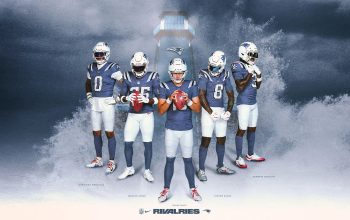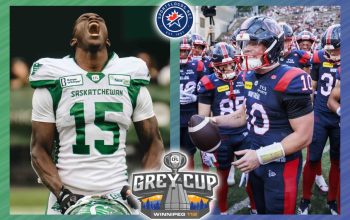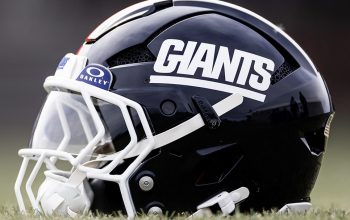Let’s make this perfectly clear: Football executives are not ornithologists. When it came to developing an identity for the new NFL franchise in Seattle in 1975, it’s safe to say that the team’s first priority was NOT to make sure all the bird nerds had their questions answered.
The first such question, of course, is just what is a seahawk? To learn, we turn to noted bird-conservation organization Audubon.
“Actually, there is no such thing,” says Jesse Greenspan on Audubon.org. “No ornithologist would refer to them as such. (They don’t even spell it as one word.) Some people, though, consider ‘sea hawks’ to be a nickname for ospreys or skuas.”
Okay, so the Seahawks are named for a colloquial term for ospreys, or possibly skuas. That’s cool. Ospreys are known around the world (literally—the one species is found on six continents) as relentless, keen-eyed fish hunters. And skuas are no pushover, either. According to Audubon, they “have a reputation for being relentless when it comes to scoring a meal, battling and even killing other birds over fish.”
Except it’s not that simple.

While osprey are found worldwide, one place you won’t find them is CenturyLink Field in Seattle. First, ospreys spend nearly all of their time over the water, and second, the Seahawks’ live mascot isn’t an osprey or a skua, but an augur hawk, which “are mainly found in the arid mountains of Africa,” according to Audubon. (That said, Taima the live mascot, pictured above, was hatched in 2005 at the World Bird Sanctuary in St. Louis.)

Further complicating the classification of the Seattle Seahawk is the team’s logo, which, according to the University of Washington’s Burke Museum, was inspired by a “Kwakwaka’wakw transformation mask depicting an eagle.” (The mask, featured in the 1965 book Northwest Coast Indian Art by Bill Holm, was on display in the Burke Museum in 2015.)
“The team’s helmets reference the thunderbird mask, opening and closing like raptor beaks,” writes Robin K. Wright, the museum’s curator. “The sweep of the bold painted line around the front of the eyesocket and back of the mouth, the open-ended eyelid lines, and the line of the mouth and beak all match nicely with the original Seattle Seahawks logo.”

Of course, as with all instances when a brand references or appropriates imagery with cultural relevance, it’s essential to tread lightly and with sensitivity. While you don’t typically hear the Seahawks lumped in with the Washington Redskins or Cleveland Indians’ Chief Wahoo in the cultural sensitivity department, the King County Arts Commission took issue with certain elements of the Seahawks logo when it was first introduced.
“The logo the Seahawks had been handed by NFL designers didn’t directly borrow from local tribal design standards,” says an article on the website Olympia Time. “The King County Arts Commission complained that it ‘fails to accurately depict the art principles of Northwest coastal Indians.'”

On the other hand, a 2015 article by Gyasi Ross of the Blackfeet Nation in Indian Country points to the team’s great relationship with the Native community, and that the logo’s stylistic homage is appropriate given the large populations of Natives in the area. Not only that, it’s a cool logo.
“Hey, Native people have some beautiful artwork,” Ross Writes, “and of course it inspires people to want a piece of it. The Seahawks logo is a perfect example of that. And we love it.”

The nickname itself was chosen from a name-the-team contest that generated more than 20,000 entries in 1975, including 153 people who submitted the name Seahawks. The Seahawks recently published a list of other suggested names, including Woodpeckers, Sawdust Eaters, Roaches, Identified Flying Objects, and Green State Geoducks.
The team selected five finalists from the contest, including Seahawks, Evergreens, Olympics, Sockeyes, and Mariners (the baseball team wouldn’t debut for another year). According the Seattle Post-Intelligencer, co-owners Lloyd Nordstrom and Herman Sarkowsky and general manager John Thompson voted, with Seahawks winning 2-1 (no word on who cast the dissenting vote and what name it was for).
The official winner of the name-the-team contest was Hazel Cooke (her name was drawn from a hat), who submitted the name, as quoted in the Post-Intelligencer, “because it’s alliterative with Seattle, and a hawk is proud, bold, fierce. I hope the team will be such.”

 Of course, Hazel Cooke’s submission was not an original thought. The Seahawks that Seattle’s football fans know and love are not the city’s first professional team with that name. From 1933 to 1941, the Seattle Seahawks were a minor league team in the North West Hockey League and Pacific Coast Hockey League. Also, in 1946, the All-America Football Conference played host to the Miami Seahawks (at right), who played just one season, but hold the distinction of being Florida’s first professional football team.
Of course, Hazel Cooke’s submission was not an original thought. The Seahawks that Seattle’s football fans know and love are not the city’s first professional team with that name. From 1933 to 1941, the Seattle Seahawks were a minor league team in the North West Hockey League and Pacific Coast Hockey League. Also, in 1946, the All-America Football Conference played host to the Miami Seahawks (at right), who played just one season, but hold the distinction of being Florida’s first professional football team.
Forty years after their 1976 debut, the current Seattle Seahawks have a logo that has stayed constant in concept, but evolved visually over the years. A major redesign in 2002 stayed true to the style of Pacific Northwest Native artwork, but featured darker colors and a streamlined, more fierce version of the bird.
When the team takes the field tomorrow in defense of their NFC championship against the Carolina Panthers, they’ll trot out on the field in one of the NFL’s top-selling brands, both in terms of individual players (Russell Wilson) and team-wide, and all of this with no one knowing just what the heck a seahawk is.













